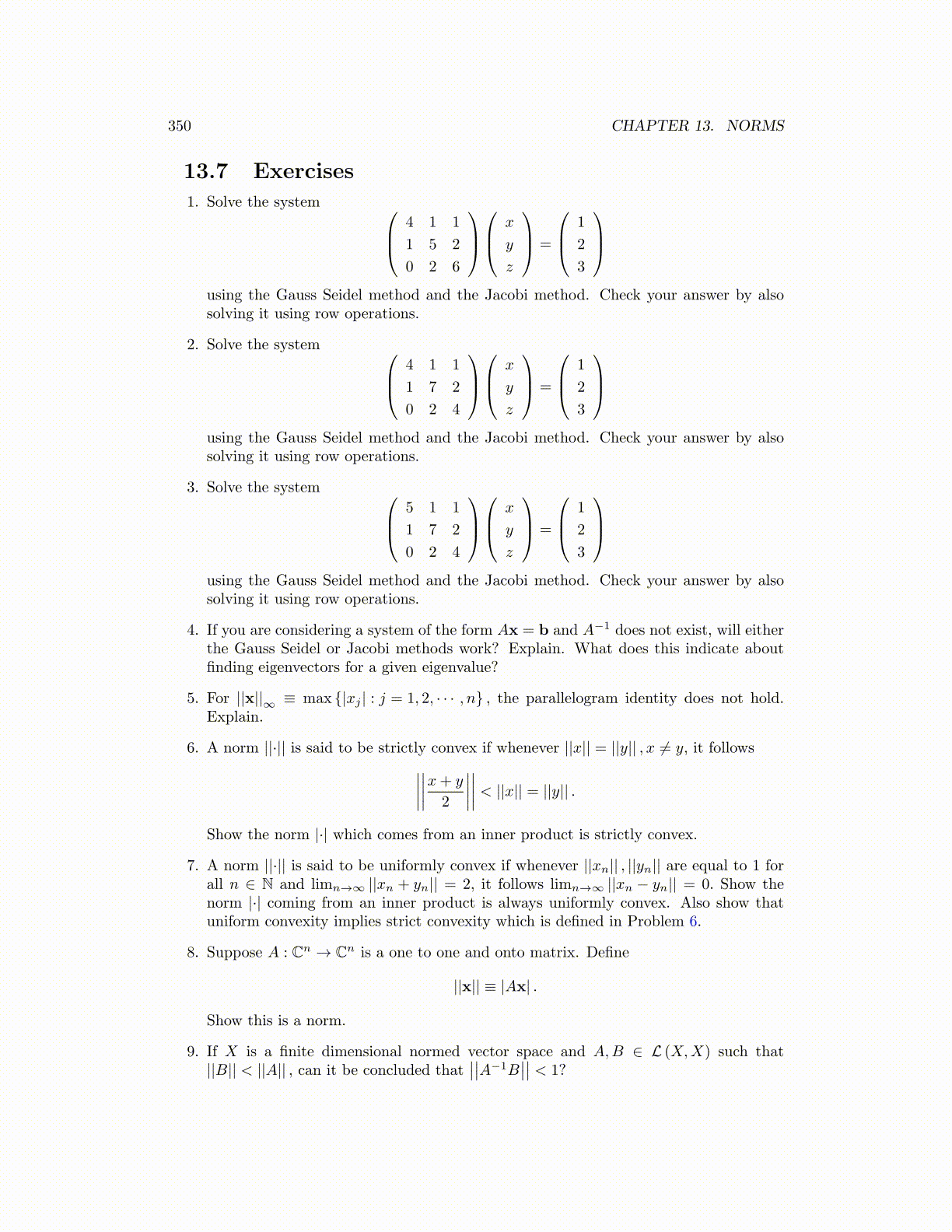
350 CHAPTER 13. NORMS
13.7 Exercises
1. Solve the system 4 1 1
1 5 2
0 2 6
x
y
z
=
1
2
3
using the Gauss Seidel method and the Jacobi method. Check your answer by alsosolving it using row operations.
2. Solve the system 4 1 1
1 7 2
0 2 4
x
y
z
=
1
2
3
using the Gauss Seidel method and the Jacobi method. Check your answer by alsosolving it using row operations.
3. Solve the system 5 1 1
1 7 2
0 2 4
x
y
z
=
1
2
3
using the Gauss Seidel method and the Jacobi method. Check your answer by alsosolving it using row operations.
4. If you are considering a system of the form Ax = b and A−1 does not exist, will eitherthe Gauss Seidel or Jacobi methods work? Explain. What does this indicate aboutfinding eigenvectors for a given eigenvalue?
5. For ||x||∞ ≡ max {|xj | : j = 1, 2, · · · , n} , the parallelogram identity does not hold.Explain.
6. A norm ||·|| is said to be strictly convex if whenever ||x|| = ||y|| , x ̸= y, it follows∣∣∣∣∣∣∣∣x+ y
2
∣∣∣∣∣∣∣∣ < ||x|| = ||y|| .
Show the norm |·| which comes from an inner product is strictly convex.
7. A norm ||·|| is said to be uniformly convex if whenever ||xn|| , ||yn|| are equal to 1 forall n ∈ N and limn→∞ ||xn + yn|| = 2, it follows limn→∞ ||xn − yn|| = 0. Show thenorm |·| coming from an inner product is always uniformly convex. Also show thatuniform convexity implies strict convexity which is defined in Problem 6.
8. Suppose A : Cn → Cn is a one to one and onto matrix. Define
||x|| ≡ |Ax| .
Show this is a norm.
9. If X is a finite dimensional normed vector space and A,B ∈ L (X,X) such that||B|| < ||A|| , can it be concluded that
∣∣∣∣A−1B∣∣∣∣ < 1?